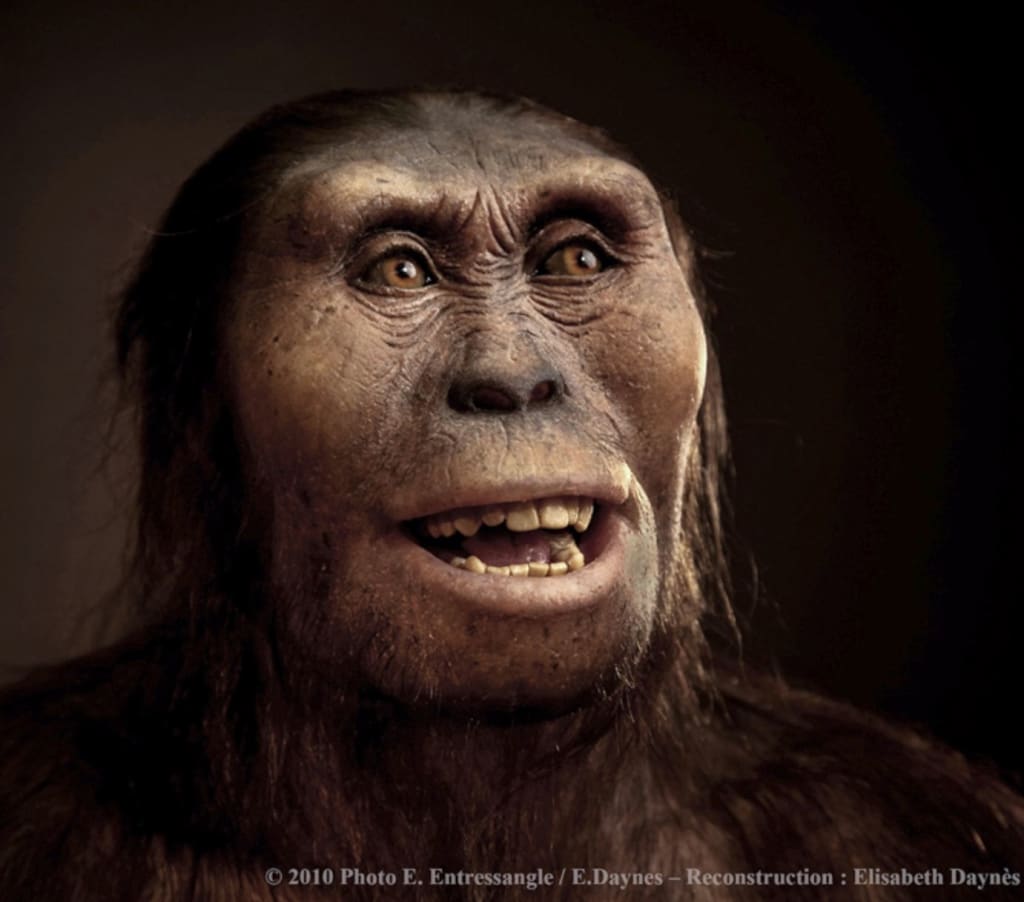The Evolution: Australopithecus afarensis
Fourth Phase

Australopithecus afarensis is a species of early hominid that lived in eastern Africa approximately 3.9 to 2.9 million years ago. The species is best known for the discovery of the famous fossil specimen named "Lucy" in 1974, which provided important insights into the anatomy and behavior of early hominids.Australopithecus afarensis, also known as "Lucy," was not a dominant species in terms of its interaction with other species. In fact, it coexisted with several other hominid species during its time, including Australopithecus africanus and Paranthropus boisei.
However, A. afarensis was a dominant species in terms of its success in adapting to its environment. It was one of the earliest hominids to evolve bipedalism, or walking on two legs, which was a key adaptation for survival in the savanna environment where it lived. By walking upright, A. afarensis was able to travel longer distances while using less energy, freeing up its hands for other tasks such as gathering food or carrying offspring.
Anatomy: Australopithecus afarensis had a number of anatomical features that suggest it was adapted for both walking on two legs and climbing trees. Its pelvis was similar to that of modern humans, which suggests that it was capable of efficient bipedalism. However, its curved fingers and toes and the shape of its shoulder blades suggest that it was still well-adapted for life in trees.
Size: Australopithecus afarensis was a relatively small hominid, with males averaging around 5 feet tall and females averaging around 3.5 feet tall. However, it had a relatively large brain for its size, with an estimated cranial capacity of around 375 to 550 cubic centimeters.
Diet: The diet of Australopithecus afarensis was likely primarily vegetarian, consisting of fruits, nuts, and other plant materials. However, the discovery of tooth marks on animal bones suggests that the species may have occasionally consumed small animals as well.
Social behavior: The discovery of multiple Australopithecus afarensis fossils in close proximity suggests that the species lived in groups or communities. This suggests that they had some level of social behavior and may have worked together to gather food and protect themselves from predators.
Importance for human evolution: Australopithecus afarensis is important for understanding human evolution because it represents a transitional stage between earlier hominids and later hominids that were more adapted for bipedalism and had larger brains. The discovery of Lucy and other fossils of Australopithecus afarensis have provided important insights into the anatomical and behavioral adaptations that were necessary for the development of bipedalism, tool use, and other traits that are characteristic of later hominids and humans.
Footprints: In addition to fossilized bones, there have been a number of discoveries of preserved footprints of Australopithecus afarensis at the Laetoli site in Tanzania. These footprints provide important insights into the way that early hominids walked and moved, and suggest that Australopithecus afarensis had a unique gait that involved a combination of bipedalism and tree-climbing abilities.
Sexual dimorphism: One interesting aspect of Australopithecus afarensis is the degree of sexual dimorphism between males and females. Studies of fossilized bones suggest that males were significantly larger than females, with males averaging around 5 feet tall and females averaging around 3.5 feet tall. This degree of sexual dimorphism is similar to that seen in modern gorillas, and suggests that Australopithecus afarensis may have had a social structure that was dominated by males.
Tool use: While there is no direct evidence of tool use by Australopithecus afarensis, some researchers have suggested that the species may have used simple stone tools to crack open nuts or other hard food items. This would suggest that the species had at least some level of cognitive and technological abilities.
Evolutionary relationships: Australopithecus afarensis is believed to be a direct ancestor of later hominids, including Homo erectus and Homo sapiens. However, the exact evolutionary relationships between these species are still a subject of debate and ongoing
About the Creator
Kobra
"Enter the dark and twisted world of the unknown I lead you through the shadows on a journey into the depths of the unknown."
"Uncovering darkness"
Enjoyed the story? Support the Creator.
Subscribe for free to receive all their stories in your feed. You could also pledge your support or give them a one-off tip, letting them know you appreciate their work.






Comments
There are no comments for this story
Be the first to respond and start the conversation.